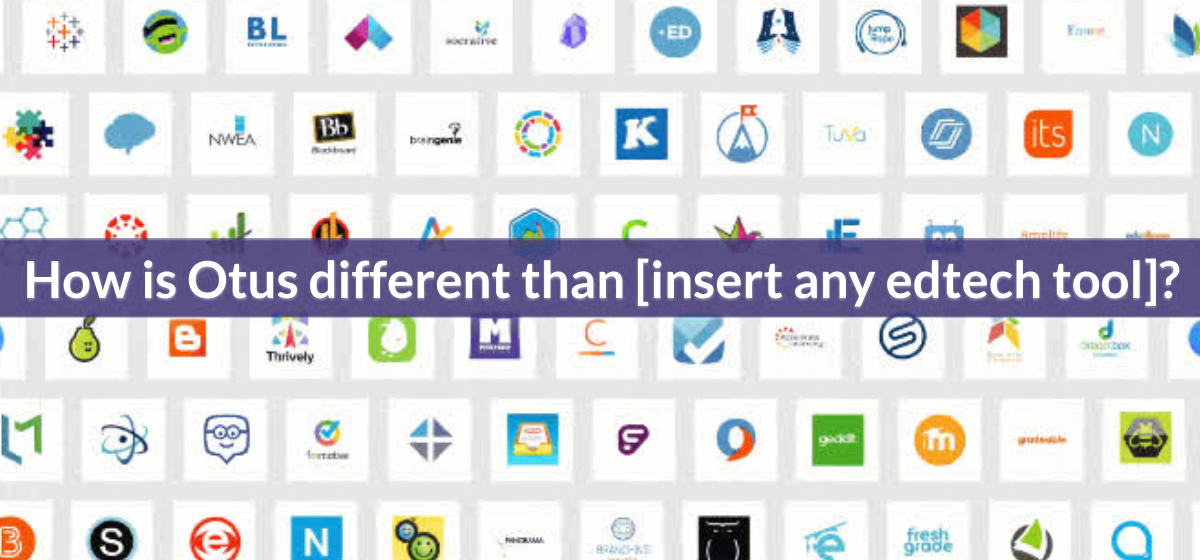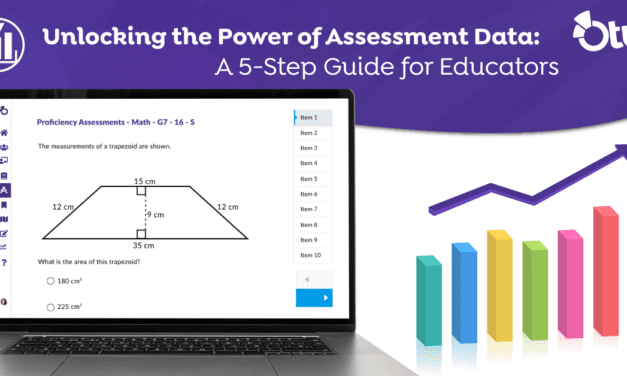Although we’ve tried to do it, Otus doesn’t fit into a box. It’s not just a Learning Management System, it’s not just an Assessment Management System, it’s not just a Data Management System, and it’s not just a collection of Classroom Management tools. Throw these types of systems up into the air, and have them magically land into a single, organized system that creates massive teacher efficiencies and unparalleled access to learning data, and then you’ll have Otus. However, each school system has unique needs so Otus can be used as a single solution for Data Management, Assessment Management, and Classroom and Learning Management.
A paradigm shift for edtech
Otus knows that every minute in the classroom is critical. By simply having a common, organized, system that contains all of the tools teachers want and need to use to engage students in the learning process, we have made teachers more efficient by allowing them to differentiate and personalize learning based on a more complete picture of the student- information is no longer in many silos.
For school leaders, now that we have a common platform being used, we can see how the decisions and initiatives directed by school leaders are impacting student growth. Parents and students become more organized, more informed, and realize that their education is truly personalized. Otus allows school systems to rethink their use of technology in a better, more important way as we shift from simply using technology, to using technology to move students forward.
How is Otus different than [insert any Learning Management System]?
(Examples: Canvas, Schoology, Moodle, PowerSchool Learning, etc.)
Learning Management Systems have historically been designed for adult learners. Whether it’s for college students or for large corporations looking to train employees, the fact is that the traditional LMS makes very little sense to K-12 educators and their students. The problems that a typical LMS solves for K-12 are real: creating assignments, organizing resources, assembling lessons, communicating with parents and students.
Otus believes that we can solve those problems even better when those tools are connected to the other tools that teachers need to manage the classroom, provide meaningful assessments, and view all of the rich data about student learning that is gathered throughout those activities.
How is Otus different than [insert any Classroom Management Tool]?
(Examples: SeeSaw, ClassDojo, Remind, etc.)
We think that many of the tools teachers need to manage the classroom are completely disconnected from one another. Teachers will use ClassDojo to track student behavior, Remind to communicate with parents, SeeSaw to maintain portfolios…the list goes on. Instead of Otus connecting to all of these tools, we have recreated all of these single solution edtech tools into Otus. Teachers are now more efficient and can dedicate their saved time to doing what they do best- connecting with students to ensure their success.
How is Otus different than [insert any Data Management System]?
(Example: Educlimber, Illuminate, PowerSchool, etc.)
Data warehouses are, generally speaking, nasty, especially for those who don’t have the time necessary to master the use of the platform. And, almost always, teachers don’t have that time. Yet, we all know that the best way to differentiate and personalize education is to leverage data.
Since teachers are the ones who are teaching students, and because we want them to use data to inform instruction, but since they may not be able to use a data warehouse, now what? Otus solves this problem. Now that teachers have one platform to manage their lives as educators, all of the tools they enjoy using to manage their days (Google Classroom, etc.) and their 3rd-Party data sits right within Otus- ready to view and ready for action.
And, now that a common platform is used throughout the entire district, school leaders have access to all of the data being generated in the classroom each day. The cherry on top is that Otus brings in data from any 3rd party assessment platform, edtech tool, or another source so that teachers can use a variety of sources of data to understand the entire picture of student performance.
How is Otus different than [insert any Assessment Management System]?
(Example: MasteryConnect, Illuminate, etc.)
Products that allow teachers to create formative and summative assessments are meaningful. Otus believes assessments can be more meaningful when teachers have the ability to assess students in a variety of creative ways.
Where most assessment platforms accommodate basic types of assessment question types (multiple-choice, true/false, etc.) Otus lets teachers leverage their creativity by gathering student responses such as voice recordings, engaging math formulas, and equations, watching videos, and writing responses—the opportunities are endless.





